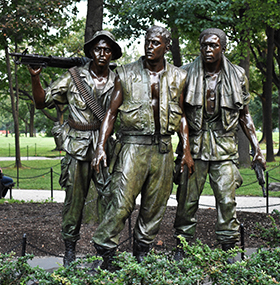| Three Soldiers | |
|---|---|
 Three Soldiers in 2018 | |
 Interactive map of Three Soldiers | |
| Location | National Mall Washington, D.C. United States |
| Established | 1984 |
| Governing body | National Park Service |
Three Soldiers (also titled Three Servicemen) is a bronze statue by Frederick Hart. Unveiled on Veterans Day, November 11, 1984, [1] on the National Mall in Washington, D.C., it is part of the Vietnam Veterans Memorial [2] commemorating the Vietnam War. [3] It was the first representation of an African American on the National Mall. [4]

